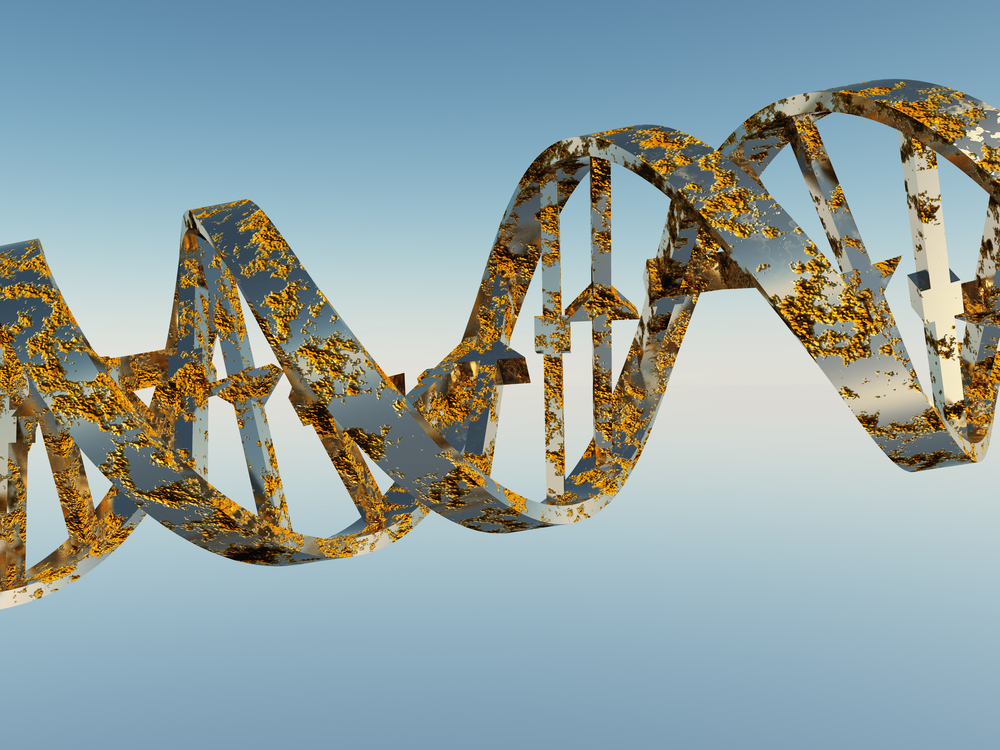Can Gene Editing Lead to a Cure for Cystic Fibrosis? Some Researchers Think So…..
Written by |

Dr. Basil Hubbard, an assistant professor of pharmacology in the University of Alberta’s Faculty of Medicine & Dentistry envisions a new world of therapeutic treatments for millions of patients that could be just over the horizon — a future in which genetic diseases like muscular dystrophy, cystic fibrosis, and others can be treated permanently through the science of genome engineering, which he believes the latest work in his lab is bringing that future closer to reality.
That research is the subject of a new Brief Communication article published in the journal Nature Methods, in which Dr. Hubbard and his research colleagues demonstrate a new technological advance in the field of genome engineering — a method that significantly improves the ability of scientists to target specific faulty genes and edit them, replacing damaged genetic code with healthy DNA.
The Nature Methods article, entitled “The Continuous directed evolution of DNA-binding proteins to improve TALEN specificity“ (Nature Methods (2015) doi:10.1038/nmeth.3515) is coauthored by Dr. Hubbard with Ahmed H, Badran, John A. Zuris, John P. Guilinger, Kevin M. Davis, Liwei Chen and David R. Liu of the Department of Chemistry and Chemical Biology at Harvard University in Cambridge, Massachusetts,; Shengdar Q. Tsai, Jeffry D. Sander and J. Keith Joung of the Harvard Medical School Department of Pathology, and the Molecular Pathology Unit, Center for Computational and Integrative Biology, and Center for Cancer Research at Massachusetts General Hospital, Charlestown, Massachusetts. Dr. Liu is also associated with the Howard Hughes Medical Institute at Harvard University.
The researchers note that nucleases containing programmable DNA-binding domains can alter the genomes of model organisms and have the potential to become human therapeutics. In their paper, they present DNA-binding phage-assisted continuous evolution (DB-PACE) as a general approach for the laboratory evolution of DNA-binding activity and specificity, noting: “We used this system to generate transcription activator like effectors nucleases (TALENs) with broadly improved DNA cleavage specificity, establishing DB-PACE as a versatile approach for improving the accuracy of genome-editing agents.”
RELATED: Genetic Background May Determine Disease Severity in Cystic Fibrosis
“There is a trend in the scientific community to develop therapeutics in a more rational fashion, rather than just relying on traditional chemical screens,” says Dr. Hubbard in a University of Alberta Department of Pharmacology release. “We’re moving towards a very logical type of treatment for genetic diseases, where we can actually say, Your disease is caused by a mutation in gene X, and we’re going to correct this mutation to treat it.”
“In theory,” he continues, “genome engineering will eventually allow us to permanently cure genetic diseases by editing the specific faulty gene(s).”
A Burgeoning Revolution In Disease Management
Dr. Hubbard explains that genome engineering involves targeted, specific modification of an organism’s genetic information, analogous to a computer programmer editing machine code. He can envision a day when scientists will be able to replace a person’s broken or unhealthy genes with healthy ones through the use of sequence-specific DNA binding proteins attached to DNA-editing tools — a field in which large strides have been madeover the past two decades and that may one day revolutionize medical care.
However, one obstacle to that outcome still requiring address before engineering of genes achieves widespread application in humans is how to ensure that those sequence-specific DNA binding proteins only affect specific target genes that are in need of repair. Dr. Hubbard observes that with current technologies, the proteins bind to and edit the correct genes the vast majority of the time, but more improvement is needed to ensure that off-target genes don’t also get modified as well potentially becoming a cause of serious health problems themselves.
Improving The Specificity of DNA-Binding Proteins
Through his research, undertaken as a post-doctoral fellow in the lab of Nature Methods article coauthor David R. Liu at Harvard University, in Boston, Dr. Hubbard has developed a way to reduce off-target DNA binding of a class of gene editing proteins known as transcription activator-like effector nucleases (TALENs). This new method allows researchers to rapidly evolve the proteins autonomously to make them more specific and targeted over time.
“This technology allows you to systematically say, I want to target this DNA sequence, and I dont want to target these others, and it basically evolves a protein to do just that,” says Dr. Hubbard. “Using this system, we can produce gene editing tools that are 100 times more specific for their target sequence.”
Future Applications
Currently a preponderance of genome engineering research is being focused on treating monogenic diseases — that is diseases involving a single gene — since these disorders are much easier for researchers to successfully target. examples being hemophilia, sickle cell anemia, muscular dystrophy and cystic fibrosis.
But while the field is still in its relative infancy, Dr. Hubbard says human clinical trials involving sequence-specific DNA-editing agents are already underway, and if they prove successful, he expects the first clinical applications of the technology could be seen during the next decade. Dr. Hubbard hopes his current work will play a role in helping genome engineering reach its full potential and he plans to continue his research in this quickly expanding field.
“Whereas traditional pharmaceutical drugs have a transient effect, gene editing could possibly provide a permanent cure for a lot of different diseases,” says Dr/ Hubbard, “We still have to overcome many hurdles but I think this technology definitely has the potential to be transformative in medicine.”
Research funding was provided by the U.S. Defense Advanced Research Projects Agency (DARPA).
Sources:
University of Alberta Department of Pharmacology
Nature Methods
Harvard University
Image Credits:
University of Alberta Department of Pharmacology
Harvard University






